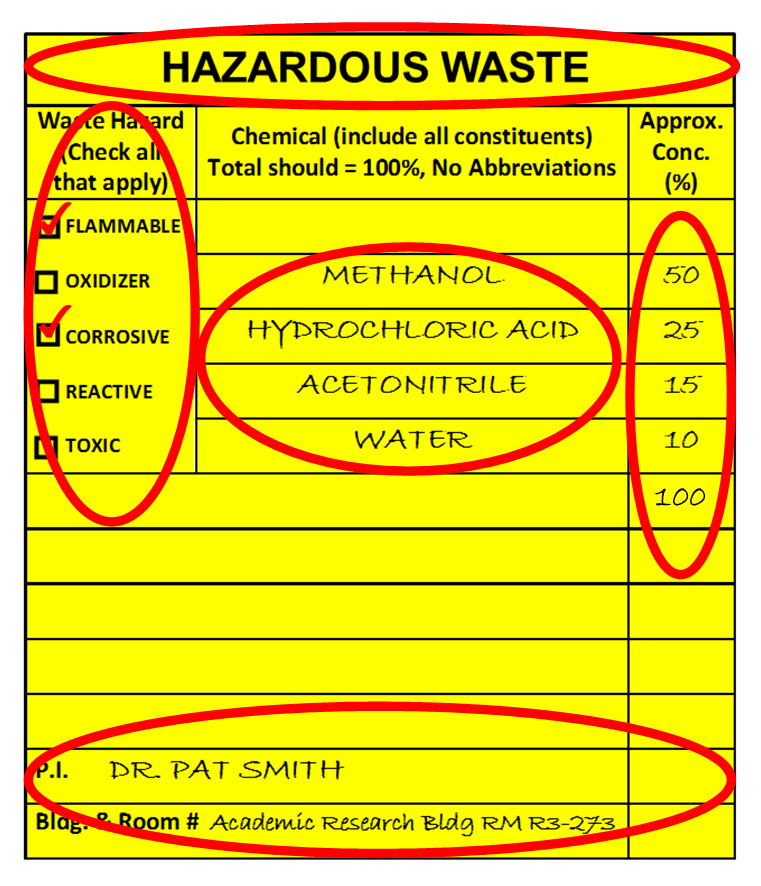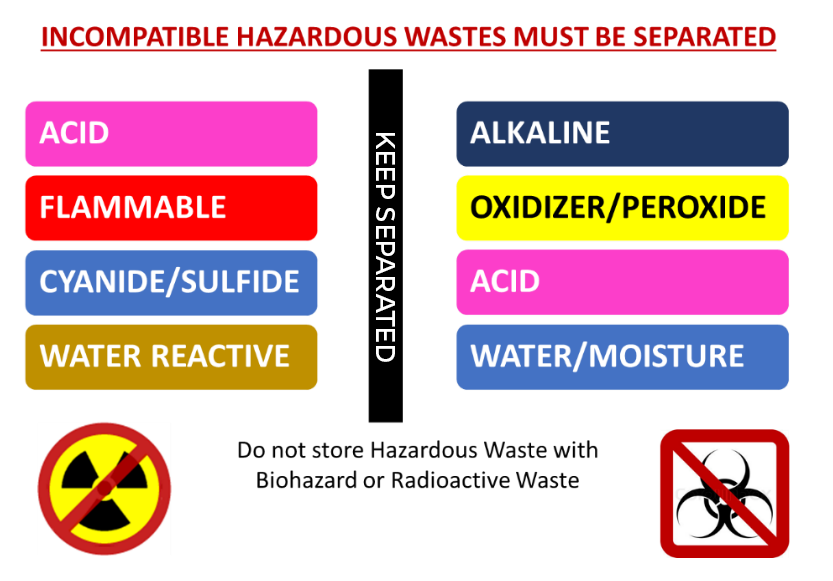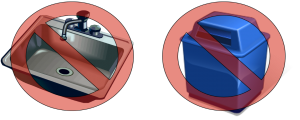- Homepage
- Departments
- Research Safety & Services
- Hazardous Waste Management
- Chemical Waste
- Waste Accumulation
Waste Accumulation
- Pest Management
- Fire Plan Review and Inspection
- Building Codes Enforcement
- ADA Assessment
- Applicable Building Codes
- Building Emergency Coordinators
- Certificate of Completion or Occupancy
- Chartfield Form Codes Permits
- Inspections
- Permit Application Process
- PERMIT APPLICATIONS AND FORMS
- Permit Fee Schedule
- Permit Instructions
- Plan Submittal Guidelines
- Temporary Structures on Campus – Including Tents
- Insurance and Risk Management
- Occupational Medicine
- Industrial Hygiene & Occupational Safety
- Ergonomics
- Drones/UAS
- Boating & Dive Safety
- Report Lab Closeout
- Radiation Safety
- Hazardous Waste Management
- Gator TRACS
- Chemical and Lab Safety
- Chemical Safety Information
- Standard Operating Procedures
- Signage & Stickers
- Safety Surveys
- Peroxide Forming Compounds
- New Labs, Moving Labs & Closeouts
- Nanoparticles
- Minors and Visitors in the Lab
- Lessons Learned
- Lab Ventilation & Fume Hoods
- Lab Safety Manual
- Lab Safety Awareness Week 2024
- Hydrofluoric Acid
- Greenhouse Safety
- First Aid Kit Info
- Equipment Purchase Approval
- Equipment Decontamination
- Cryogens
- Controlled Substances & Pharmaceutical Products
- Compressed Gas
- Clinic Safety
- Chemical Storage and Management
- Chemical Spills
- Chemical Inventory
- Chemical Hygiene Plan
- Chemical Exposures
- Acids That Deserve Special Attention
- Biological Safety
- Vaccination for Research Personnel
- Shipping and Transport of Biological Materials
- Select Agents
- SARS-CoV-2/COVID-19 Specimen Research
- Research Involving Flying Insects
- Recombinant & Synthetic Nucleic Acids
- Plant Research & Greenhouses
- NIH Guidelines Flowchart
- BloodBorne Pathogen Program
- Biological Spills
- Biohazardous Waste Disposal
- Biohazard Project Registration
- Autoclaves
- Acute Biological Toxins
- Animal Research Safety
Hazardous waste accumulation must follow the University of Florida guidance presented here. UF guidance is based on Federal and State regulation and must be followed closely in order to avoid harm to human health or to the environment. Hazardous waste accumulation throughout campus is subject to unannounced Federal and State inspection. Non-compliance can result in both civil and criminal penalty.
Satellite Accumulation
Hazardous Waste at the University of Florida must be initially accumulated at the point of generation, in designated “Satellite Accumulation Areas,” or SAAs. The EPA has simplified hazardous waste management at this level and the requirements are summarized in the Satellite Accumulation Area Requirements and Illustrated in the poster below.






